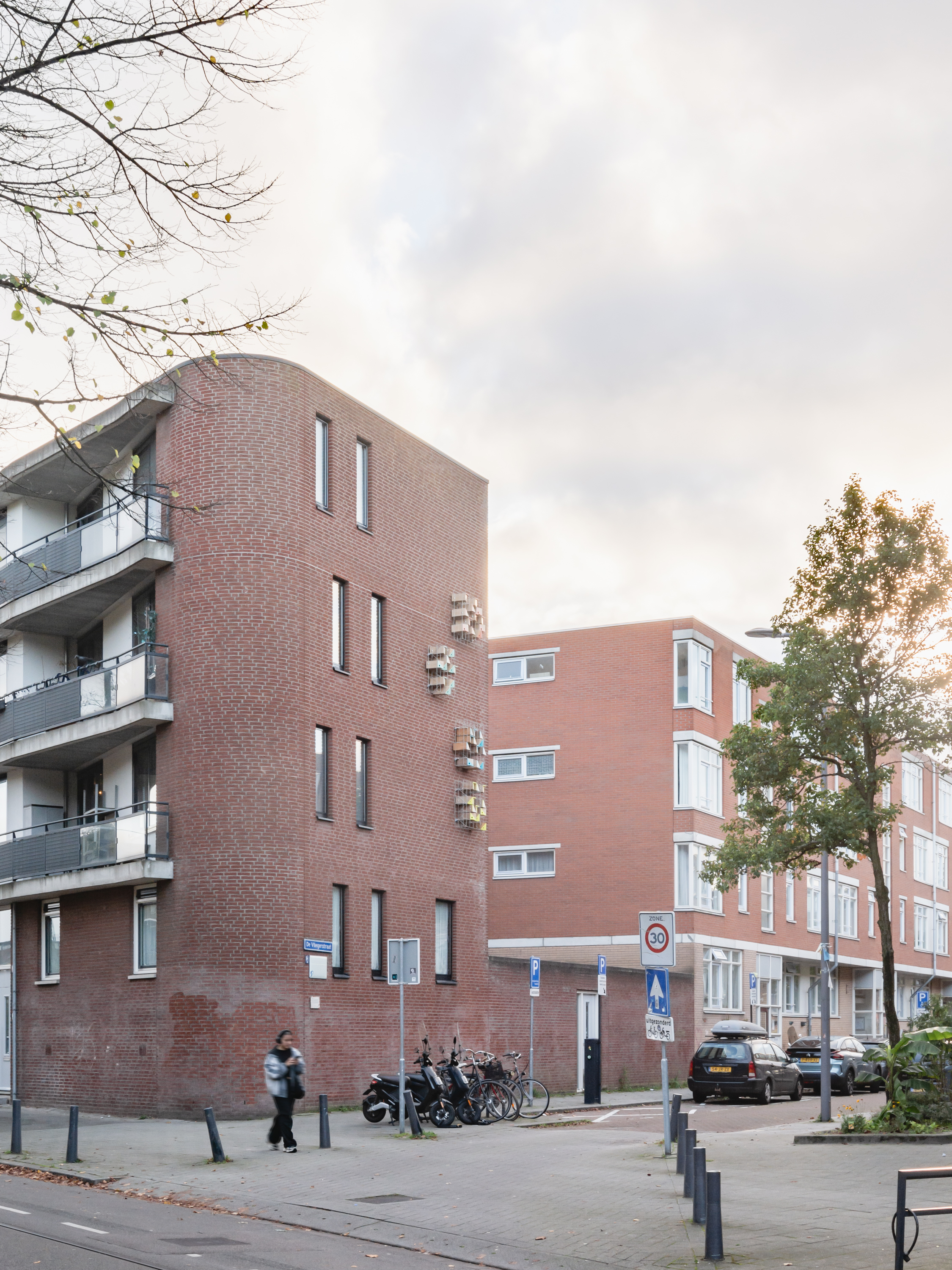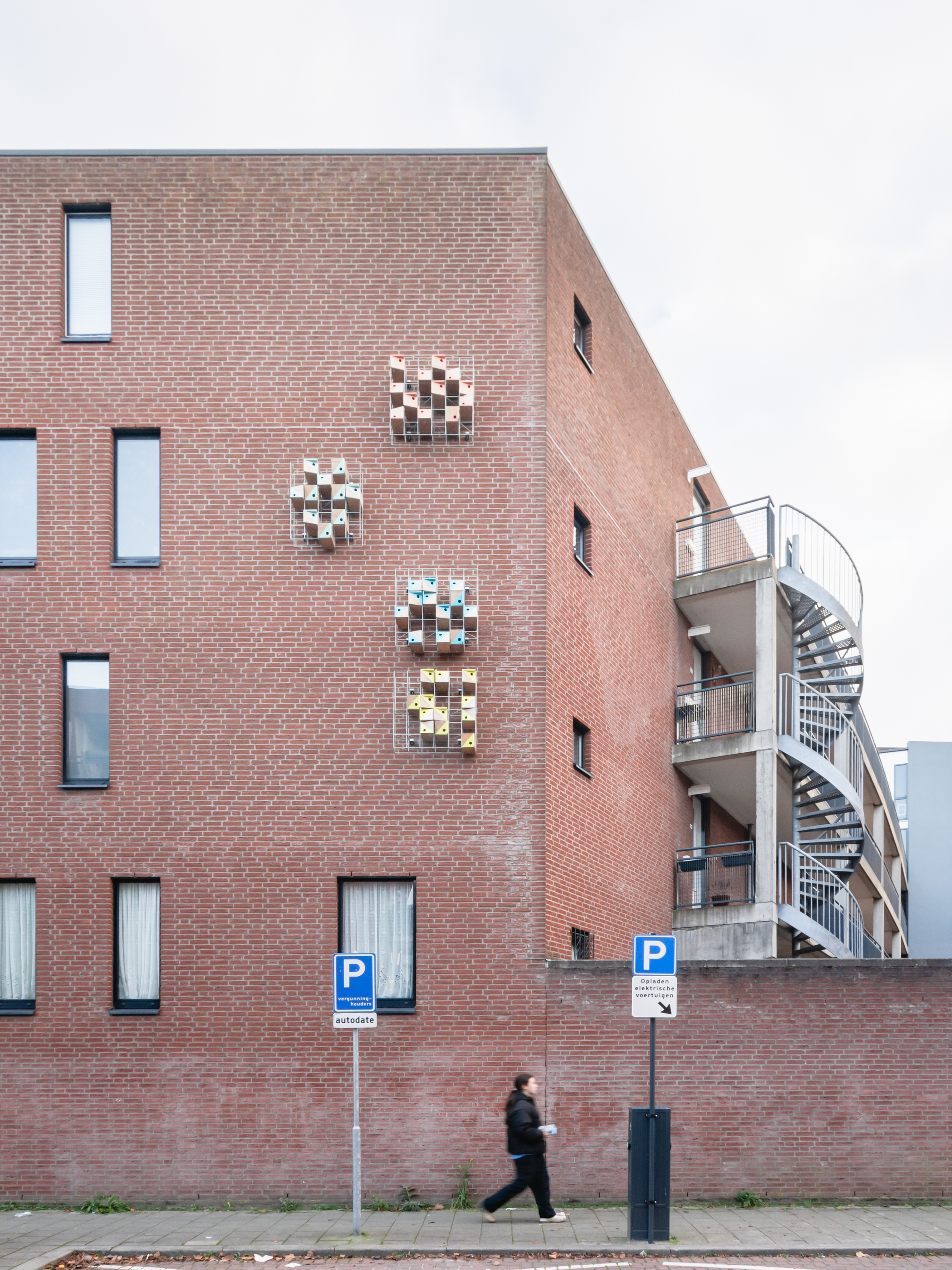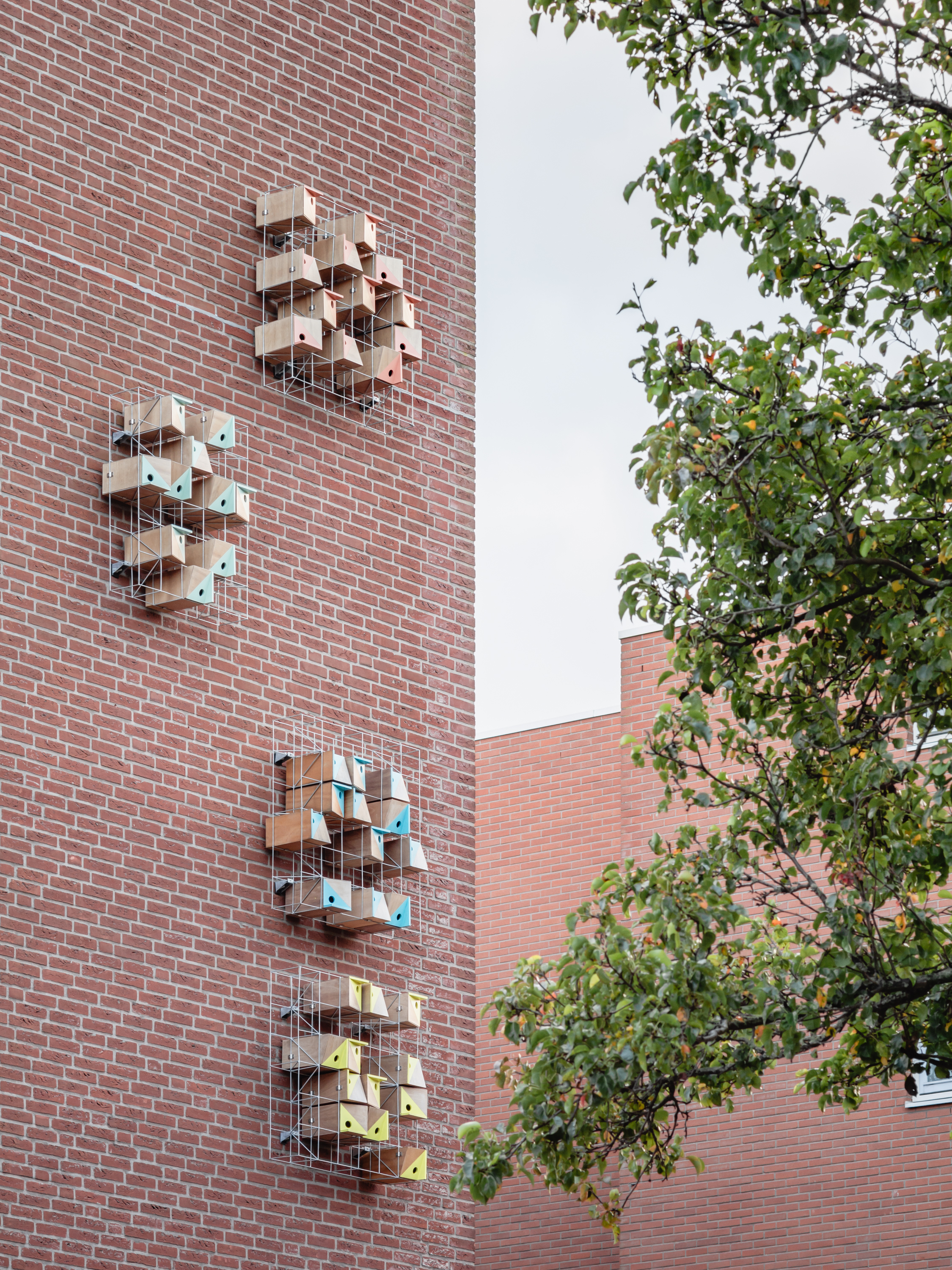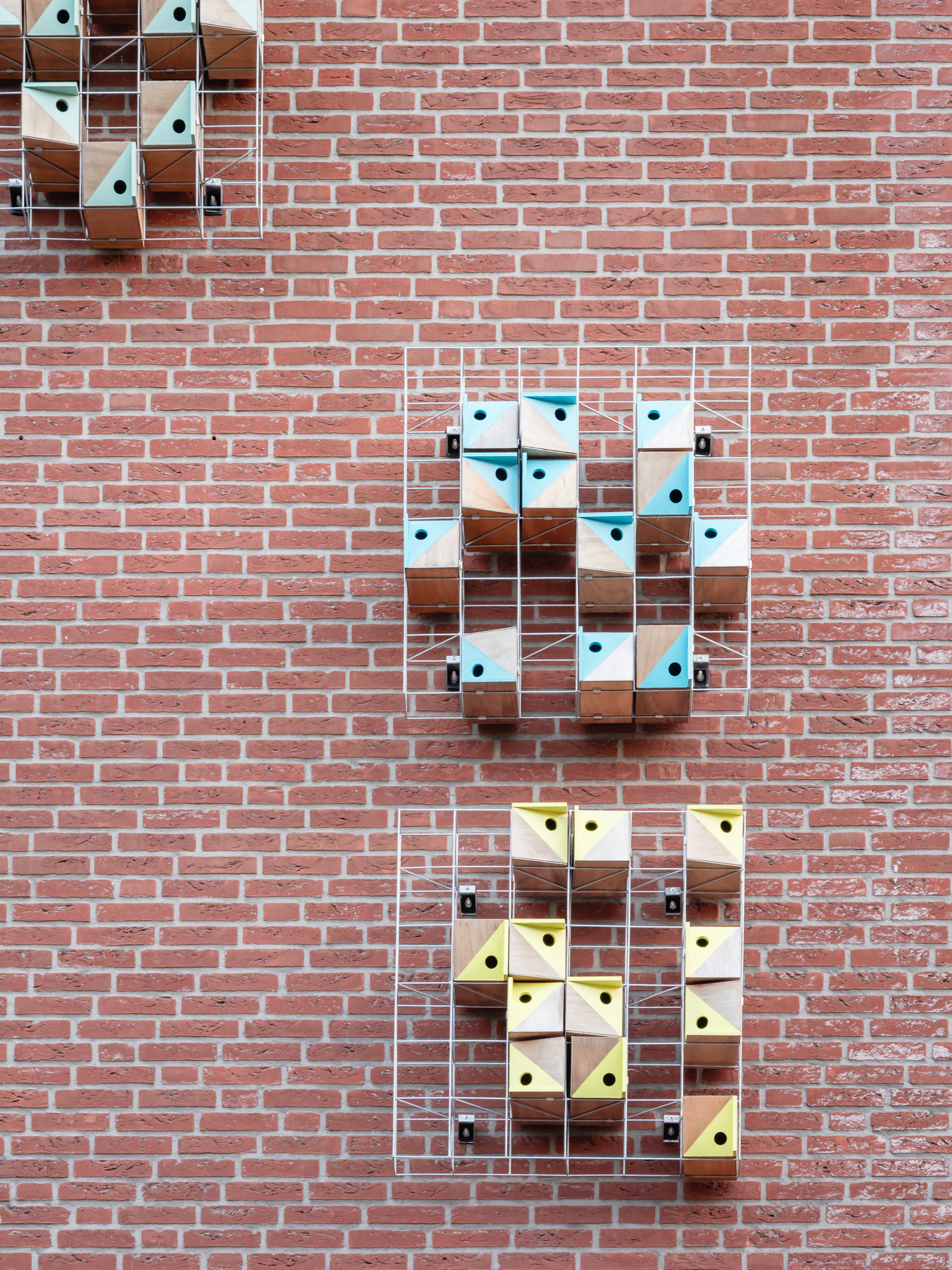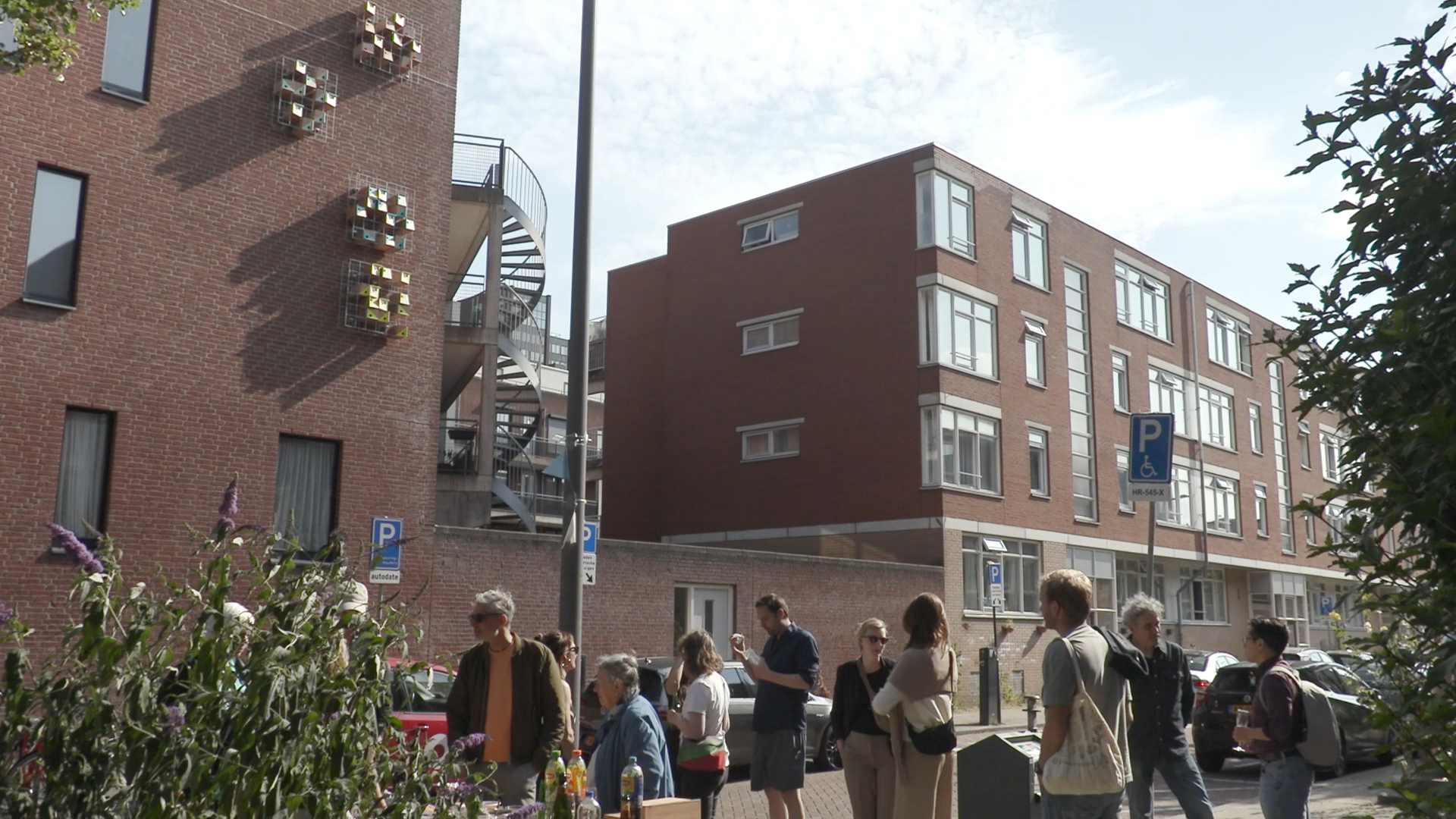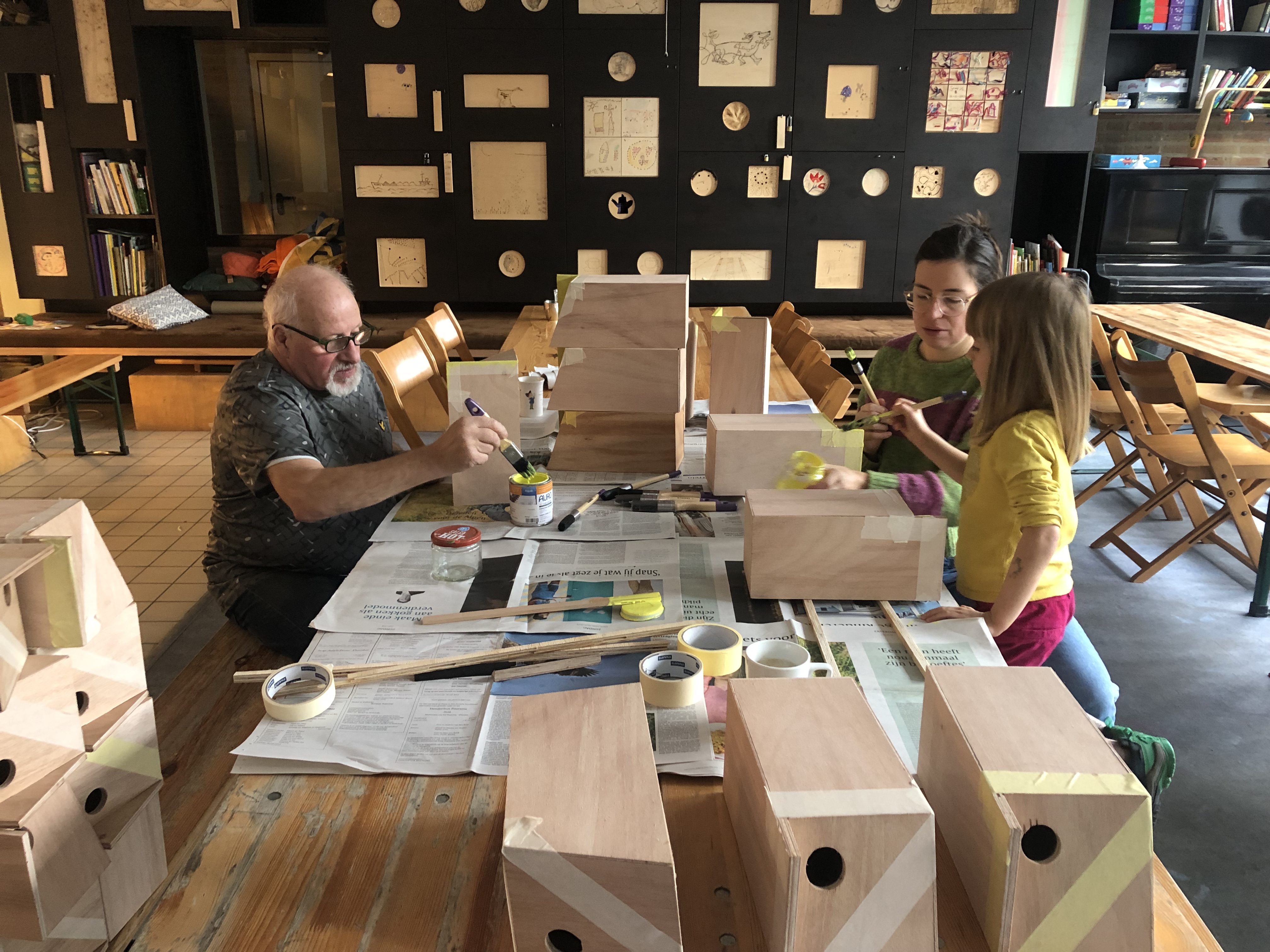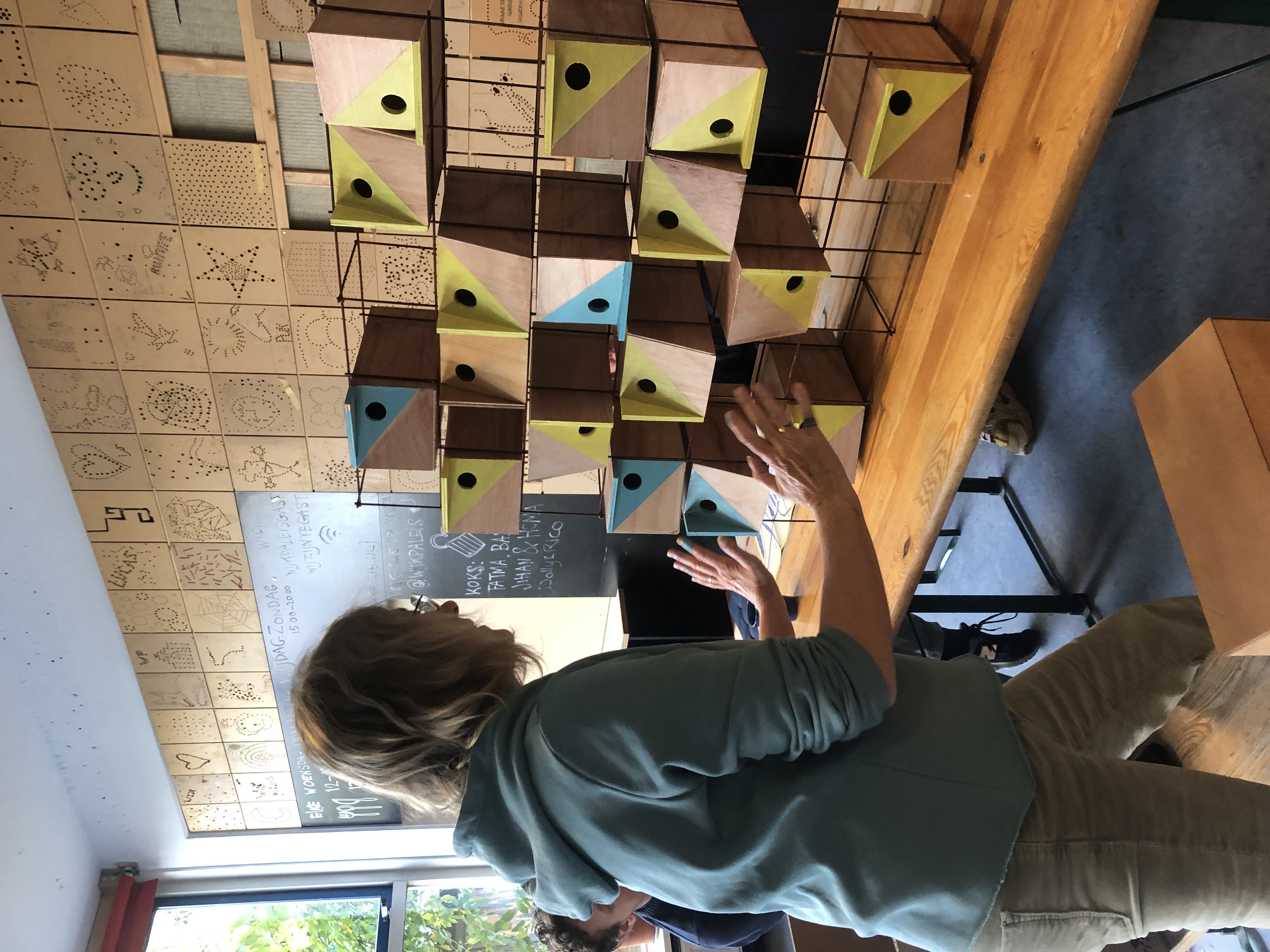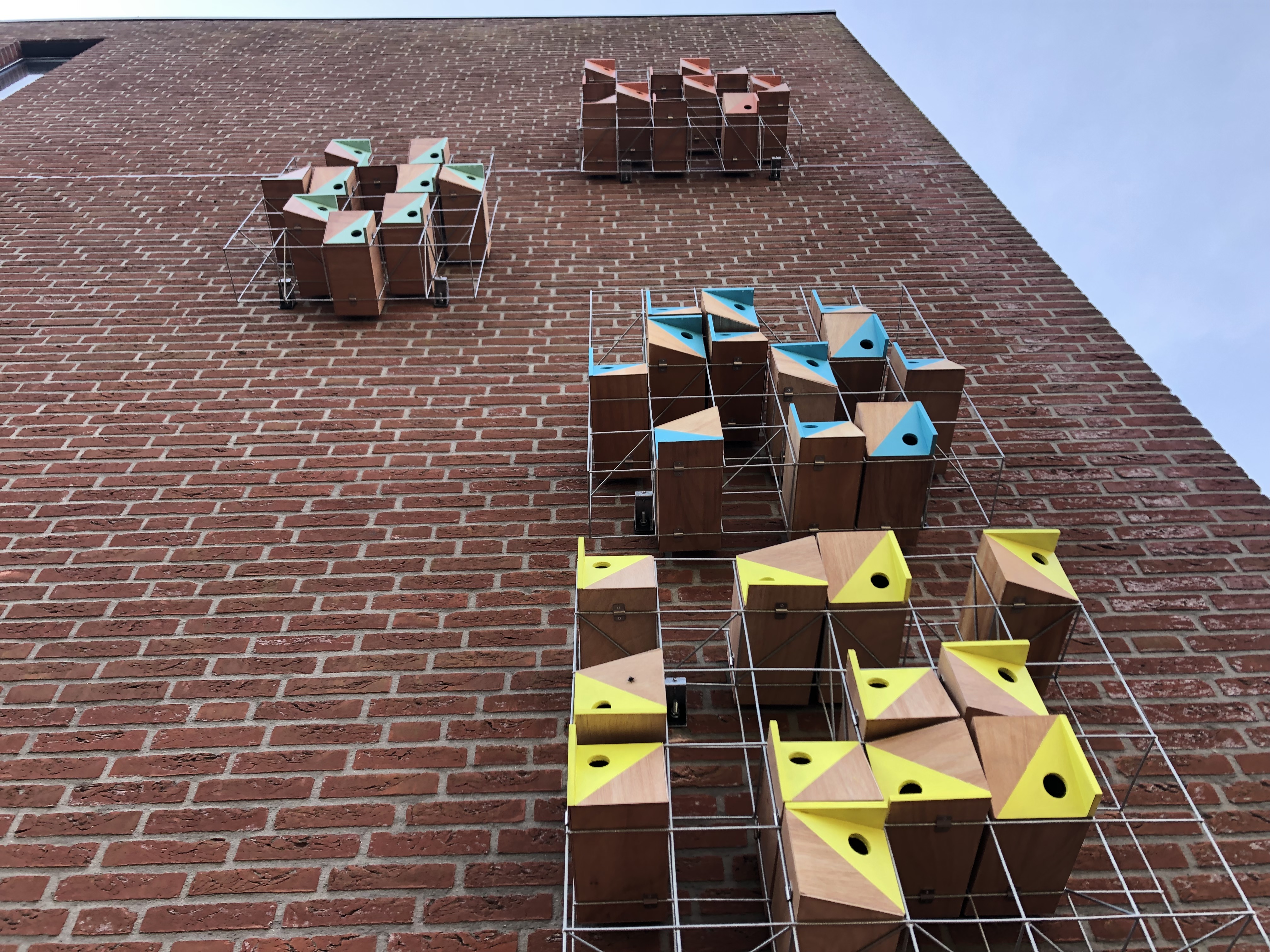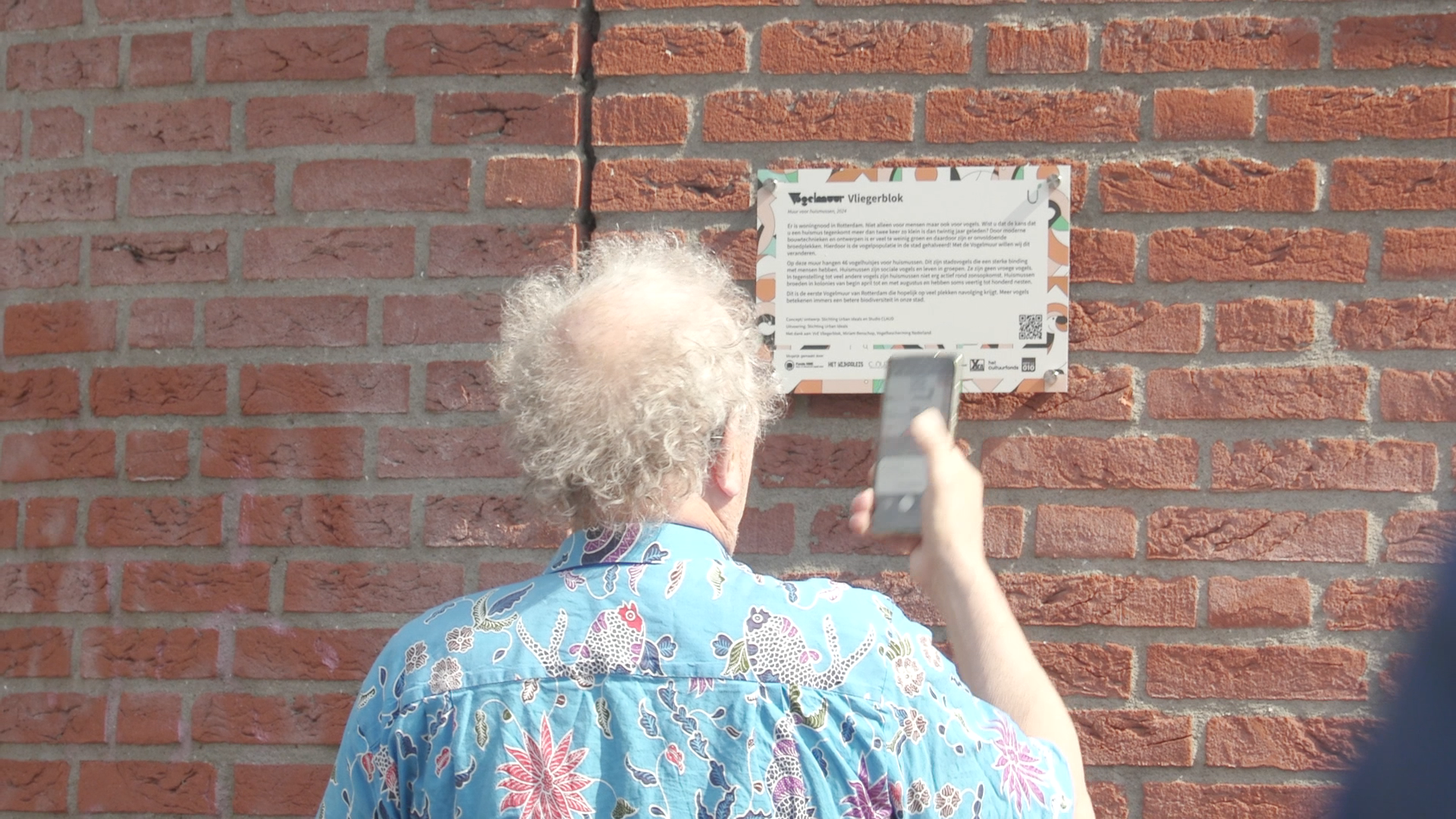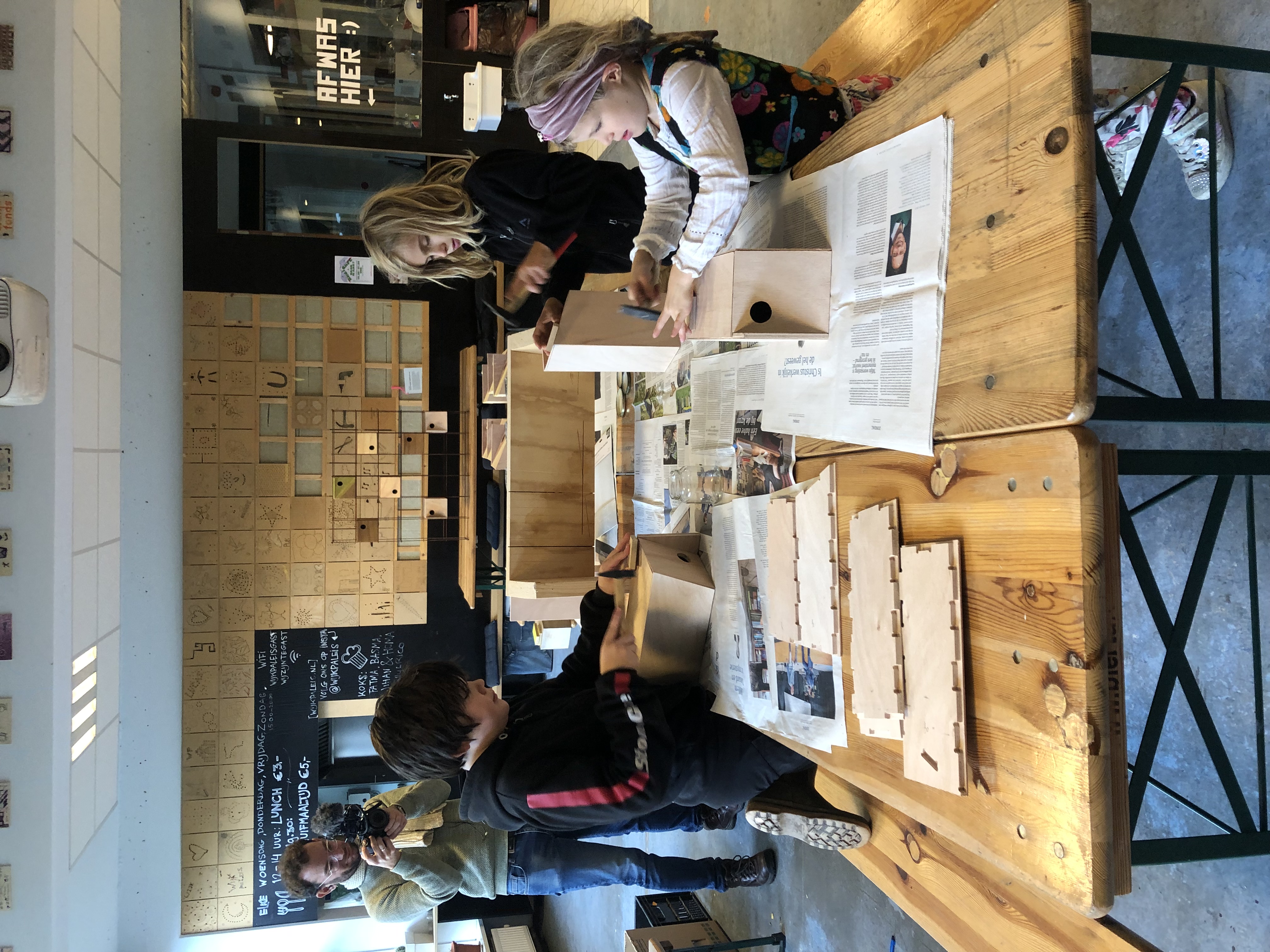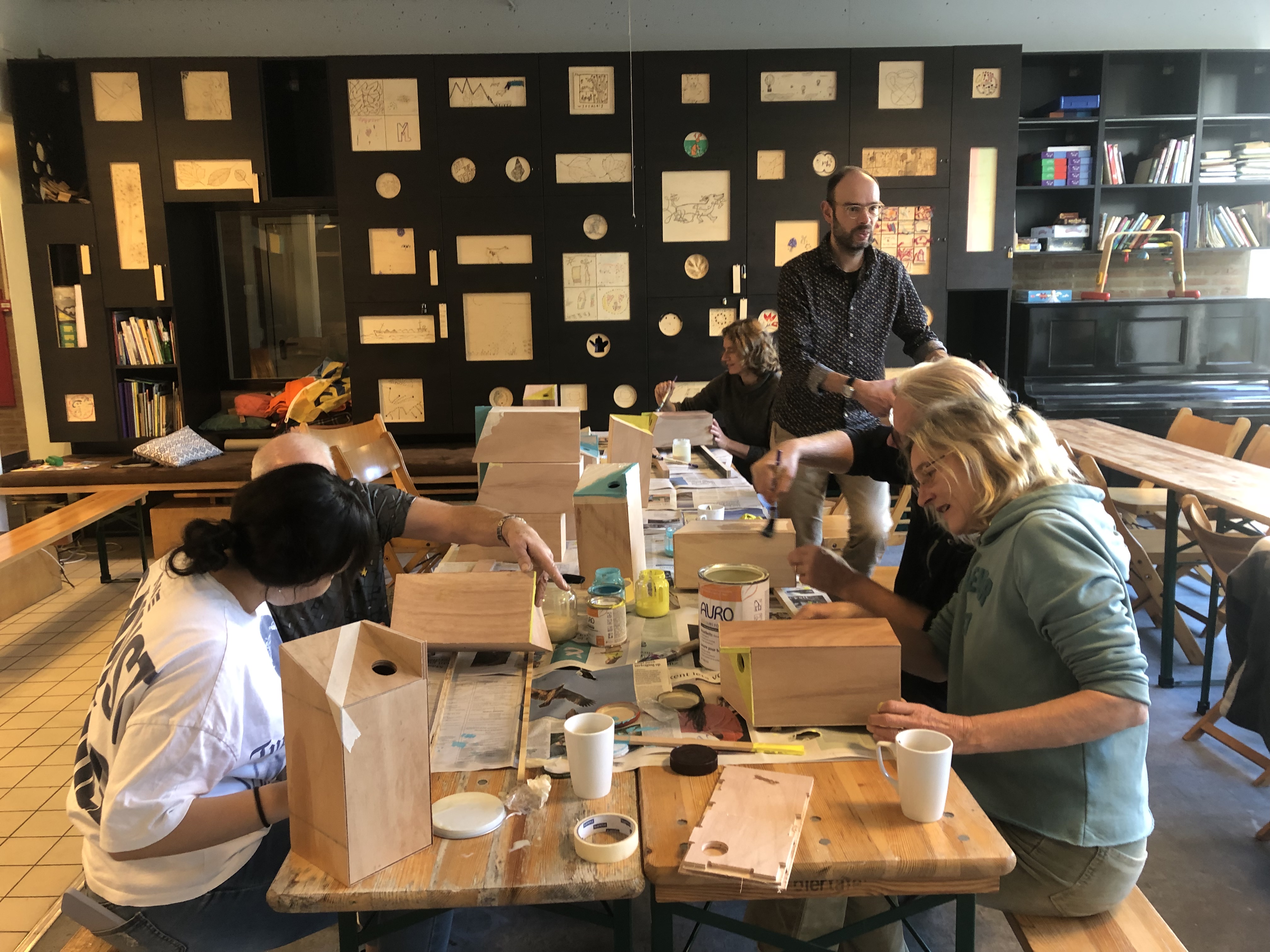Reconnecting with nature
Vogelmuur
Habitat for Urban Birds
Vogelmuur is a project intersecting street art, architecture, design, urban
ecology and community development. The project enhances urban
biodiversity by creating “apartments” for birds on blind walls while
creating a nature inclusive, aesthetically pleasing street art that raises
awareness about the decline of urban wildlife and the issue of climate
change.
ecology and community development. The project enhances urban
biodiversity by creating “apartments” for birds on blind walls while
creating a nature inclusive, aesthetically pleasing street art that raises
awareness about the decline of urban wildlife and the issue of climate
change.
Netherlands
Local
Rotterdam
Mainly urban
It refers to a physical transformation of the built environment (hard investment)
Yes
2024-07-04
No
No
No
As a representative of an organisation
Vogelmuur is a citizen initiative to enhance and improve urban biodiversity by creating ‘apartments’ for birds on blind facades of cities. By doing that it tackles the decline of bird species, it brings awareness to the issue of loss of biodiversity and it kindles urban citizens and communities to live closer to nature and to take care of it. With this project we plug vertical walls of buildings into a network of urban nature and creating a nature connection or networks across neighborhoods. This network of Vogelmuur creates a larger ecosystem that is able to bring a change in the development of nature in the city.
The project was developed together with the residence of the block and with the neighborhood. One of the objectives of the project is to be educative, stimulating new perspectives over nature solution and to build a community of care. With this project we reached the neighborhood for action to create space for biodiversity, we built a community of care, and though the workshops children were educated over the importance of birds in cities. Therefore, Vogelmuur is not only a physical transformation of a blind facades to a habitat for birds but also a community building project.
Another objective of the Vogelmuur is to make the project sustainable and circular both in the making process and in use of materials. Developing the project with local stakeholders and reusing rest materials was an important aspect of the project. Moreover, it was an important criterion to create a product that is adaptable, flexible and modular allowing the project to be replicated and expended to other locations, forming a network of habitats for birds living in urban areas.
The first Vogelmuur at the Vliegerblok of Rotterdam transforms a semi-blind façade into a dwelling place for birds. This first Vogelmuur provides 46 apartments for the house sparrows, a drastically declining species in the urban regions of Netherlands.
The project was developed together with the residence of the block and with the neighborhood. One of the objectives of the project is to be educative, stimulating new perspectives over nature solution and to build a community of care. With this project we reached the neighborhood for action to create space for biodiversity, we built a community of care, and though the workshops children were educated over the importance of birds in cities. Therefore, Vogelmuur is not only a physical transformation of a blind facades to a habitat for birds but also a community building project.
Another objective of the Vogelmuur is to make the project sustainable and circular both in the making process and in use of materials. Developing the project with local stakeholders and reusing rest materials was an important aspect of the project. Moreover, it was an important criterion to create a product that is adaptable, flexible and modular allowing the project to be replicated and expended to other locations, forming a network of habitats for birds living in urban areas.
The first Vogelmuur at the Vliegerblok of Rotterdam transforms a semi-blind façade into a dwelling place for birds. This first Vogelmuur provides 46 apartments for the house sparrows, a drastically declining species in the urban regions of Netherlands.
Prevent loss of biodiversity
Sustainable and circular design and implementation
Building a community of care
Contribute to the street art with a new cultural and social awareness
Adaptable, flexible and scalable
Vogelmuur project was initiated as a pilot project to enhance biodiversity in Rotterdam. The reason for this is that in recent decades the population of urban birds (living preferably in cities) have drastically declined, while these birds play an important role in urban biodiversity. In respond to this Vogelmuur was developed to use blind façades of buildings to create ‘apartments’ for birds and therefore contributing to the redevelopment and restoration of urban biodiversity. As a result, we created 46 “apartments” for birds on one façade.
Furthermore, one of the objectives was to create a product that is adaptable, flexible, scalable and circular. These characteristics are key elements in the development of the project. The modules are designed to be adaptable to new situations or project locations. The façade modules are made to be repurposed easily by making them flexible not only to the needs of many bird species but also for example to be used like a plant holder for a green façade. Therefore, the Vogelmuur as a façade product has many applications due to its flexibility and adaptability.
The birdhouses of the module are designed to be produced sustainable using a CNC milling machines that eliminated rest materials and optimizes production. Moreover, using this technology allowed us to design a product where we could eliminate the use of glue and nails. This makes the product more bird friendly and also easier to maintain by replacing elements rather than the entire house. Reusing local waste wood for the prototyping, and producing everything locally the project closed the loop for material and production sourcing.
As the first pilot project, Vogelmuur is exemplary in exploring the possibilities buildings offer in the development of urban biodiversity and its design and production principles. Restoring biodiversity by an adaptable, flexible and circular façade product, Vogelmuur contributes to the sustainable development of bird habitats in cities.
Furthermore, one of the objectives was to create a product that is adaptable, flexible, scalable and circular. These characteristics are key elements in the development of the project. The modules are designed to be adaptable to new situations or project locations. The façade modules are made to be repurposed easily by making them flexible not only to the needs of many bird species but also for example to be used like a plant holder for a green façade. Therefore, the Vogelmuur as a façade product has many applications due to its flexibility and adaptability.
The birdhouses of the module are designed to be produced sustainable using a CNC milling machines that eliminated rest materials and optimizes production. Moreover, using this technology allowed us to design a product where we could eliminate the use of glue and nails. This makes the product more bird friendly and also easier to maintain by replacing elements rather than the entire house. Reusing local waste wood for the prototyping, and producing everything locally the project closed the loop for material and production sourcing.
As the first pilot project, Vogelmuur is exemplary in exploring the possibilities buildings offer in the development of urban biodiversity and its design and production principles. Restoring biodiversity by an adaptable, flexible and circular façade product, Vogelmuur contributes to the sustainable development of bird habitats in cities.
Vogelmuur is a project intersecting street art, architecture, design, urban ecology and community development. Integrating many different fields, the project stimulates a new cultural and social awareness to the need of sustainable development. Our aim was to design a bird wall that contributes to the artistic streetscape of Rotterdam and aspire future developments of facades that can be beautiful and functional in enhancing the development of urban networks of habitat. The project was developed to be expended as a collective work of the neighborhoods and create a network of vertical walls that embrace dwelling places for birds.
Vogelmuur is designed to be playful in appearance and aesthetically enhancing the streetscapes while creating a place for birds that is attractive and provide a home that fulfils all their needs. Because of the aesthetic of the modules the project is not only adding value to the street culture, but also bringing awareness to the need for nature-based solutions to tackle loss of biodiversity. Rotterdam is a city with an influential design culture, reflected even to murals and street sculptures. Vogelmuur adds another layer to this street culture by making a wall sculpture that is nature inclusive and adaptable. With this we want to showcase that nature-based solutions can be aesthetically pleasing. The aim is to aspire others to transform blind facades to a wall that allows nature to dwell in while making it beautiful and meaningful.
Vogelmuur is designed to be playful in appearance and aesthetically enhancing the streetscapes while creating a place for birds that is attractive and provide a home that fulfils all their needs. Because of the aesthetic of the modules the project is not only adding value to the street culture, but also bringing awareness to the need for nature-based solutions to tackle loss of biodiversity. Rotterdam is a city with an influential design culture, reflected even to murals and street sculptures. Vogelmuur adds another layer to this street culture by making a wall sculpture that is nature inclusive and adaptable. With this we want to showcase that nature-based solutions can be aesthetically pleasing. The aim is to aspire others to transform blind facades to a wall that allows nature to dwell in while making it beautiful and meaningful.
Vogelmuur transforms neighborhoods and streetscapes together with the residents to be a more diverse and (nature) inclusive. Through locally organized workshops people of all ages and genders are participants of this transformation. Residents developing together their own street and neighborhoods not only brings them closer to each other but also builds relations between the different communities, age and social groups. The 8 workshops that we organized for the neighborhood and for the residents represented this exchange of cultures and reflected the spirit of togetherness. Developing the project together established among the residents of the block a community of care. They organized a group app to monitor and care for their Vogelmuur.
Besides developing a community of care, the workshops created opportunities for social interaction. The diverse range of participants promoted intergenerational and cross-cultural exchanges. Moreover, these workshops were also public, free of access and open to all. The neighborhood was informed though flyers, neighborhood organization and online platforms. Besides working with an organization who hires people in reintegration to the labor market supported vulnerable members of our society. All in all, Vogelmuur created an opportunity of social engagement, promoted a cross- cultural exchange, developed a community of care and promoted social cohesion.
Besides developing a community of care, the workshops created opportunities for social interaction. The diverse range of participants promoted intergenerational and cross-cultural exchanges. Moreover, these workshops were also public, free of access and open to all. The neighborhood was informed though flyers, neighborhood organization and online platforms. Besides working with an organization who hires people in reintegration to the labor market supported vulnerable members of our society. All in all, Vogelmuur created an opportunity of social engagement, promoted a cross- cultural exchange, developed a community of care and promoted social cohesion.
The involvement of residents and locals, as a grassroot initiative, were essential in the implementation of the first Vogelmuur in Rotterdam. People benefited and affected by the project in multiple ways. In one way, citizens improved their living environment by making a wall that enhance urban biodiversity. This stimulated many residents to action in turning their façade green. Currently a group of residents are working on developing part of the building façade to be green and turning their roof to a green roof. Many people recognized and become aware of the loss of biodiversity and they learned about importance of birds and their role in our urban environment though the workshops we organized. The interactions and exchange of knowledge during the workshops was encouraging citizens to contribute to the sustainable development of their living environment.
Secondly, residents of the building and citizens of the neighborhood were involved in the co-creation of the modules and bird houses. They participated in making the birdhouses and deciding on the composition of the bird houses in the modules. These not only provide them a skill of making something, but also these activities created a social connection between citizens. Therefore, the social aspect was greatly appreciated by those involved. This appreciation was also reflected by the Grand Opening of the project where many residents and neighbors felt proud and developed a sense of ownership. They together created an app for monitoring the wall and therefore formed a community of care and further social interaction. In summary, the social connections developed during the project, the community’s care and the ownership the residents took for the project was the greatest impact of their involvement.
Secondly, residents of the building and citizens of the neighborhood were involved in the co-creation of the modules and bird houses. They participated in making the birdhouses and deciding on the composition of the bird houses in the modules. These not only provide them a skill of making something, but also these activities created a social connection between citizens. Therefore, the social aspect was greatly appreciated by those involved. This appreciation was also reflected by the Grand Opening of the project where many residents and neighbors felt proud and developed a sense of ownership. They together created an app for monitoring the wall and therefore formed a community of care and further social interaction. In summary, the social connections developed during the project, the community’s care and the ownership the residents took for the project was the greatest impact of their involvement.
The first pilot project Vogelmuur was created in collaboration with neighborhood organizations Het Wijkpaleis and De Middellander. These facilitated our location search and helped in involving citizens in the implementation of the project. These local organizations were the key to the success of the project by providing space, time and advise.
The project was developed on a local level with one exception by the involvement of the national bird organizations overseeing and researching currents and trends. These organizations, the Vogelbescherming Nederland and Vivara Pro, helped us with design principles of the wall and requirement for the houses, and advised us on the needs of specific birds. On the city scale, we worked further with a local ecology adviser who helped us to identify suitable locations and detect bird species of the neighborhood of our project community. They also provided us with information on loss of biodiversity on the local scale and directed us to focus on species that needs urgent attention.
Besides the neighborhood organizations and bird experts, we worked with local production facilities and designers, who helped us to design the product to suit the needs of the birds and the needs of the community. They contributed to design a product that can be CNC milled reducing rest materials and waste. Their role in prototyping the modules and the bird houses was essential. On a regional level we worked together with a social enterprise for the final production of the birdhouses. This organization work with people in reintegration to the labor market and therefore adding an another layer of social cohesion to the project.
The project was developed on a local level with one exception by the involvement of the national bird organizations overseeing and researching currents and trends. These organizations, the Vogelbescherming Nederland and Vivara Pro, helped us with design principles of the wall and requirement for the houses, and advised us on the needs of specific birds. On the city scale, we worked further with a local ecology adviser who helped us to identify suitable locations and detect bird species of the neighborhood of our project community. They also provided us with information on loss of biodiversity on the local scale and directed us to focus on species that needs urgent attention.
Besides the neighborhood organizations and bird experts, we worked with local production facilities and designers, who helped us to design the product to suit the needs of the birds and the needs of the community. They contributed to design a product that can be CNC milled reducing rest materials and waste. Their role in prototyping the modules and the bird houses was essential. On a regional level we worked together with a social enterprise for the final production of the birdhouses. This organization work with people in reintegration to the labor market and therefore adding an another layer of social cohesion to the project.
Vogelmuur project intersected many disciplines including product design, architecture, urban design, street art, urban ecology and community development.
First of all, it involved the discipline of industrial design by designing a physical product, but also by designing an approach to a citizens and local organizations involvement. Besides, it involved architecture by designing a façade to be nature- inclusive. Moreover, it also intersecting urban design in a very local scale by creating a wall sculpture transforming a streetscape and contributing the street culture of the city. Because this is the first wall of a bigger network we created, the project contributes to a longer-term urban development of a neighborhood and stimulates citizens to act in this improvement.
Second, the design and implementation of the project was based on many ecological studies, both locally and national. The involvement of experts in this area was inevitable and their collaboration with the team was essential. We had several interdisciplinary meetings with the national organizations, and work sessions, excursions and site visits with the local experts.
Lastly, with the neighborhood involvement we worked with experts in social studies and community science. Their work was essential in the connection with the designers and the local citizens. Their expertise helped us to reach many people in the neighborhood and helped us to engage people in the implementation of the project.
First of all, it involved the discipline of industrial design by designing a physical product, but also by designing an approach to a citizens and local organizations involvement. Besides, it involved architecture by designing a façade to be nature- inclusive. Moreover, it also intersecting urban design in a very local scale by creating a wall sculpture transforming a streetscape and contributing the street culture of the city. Because this is the first wall of a bigger network we created, the project contributes to a longer-term urban development of a neighborhood and stimulates citizens to act in this improvement.
Second, the design and implementation of the project was based on many ecological studies, both locally and national. The involvement of experts in this area was inevitable and their collaboration with the team was essential. We had several interdisciplinary meetings with the national organizations, and work sessions, excursions and site visits with the local experts.
Lastly, with the neighborhood involvement we worked with experts in social studies and community science. Their work was essential in the connection with the designers and the local citizens. Their expertise helped us to reach many people in the neighborhood and helped us to engage people in the implementation of the project.
The project is innovative in its design approach, in its application and implementation. The modules of the bird apartments are made in a way that it can be interchangeable to diverse bird species. The grid of the module also makes the design very flexible and adaptable. The composition of each module is unique and not repetitive, while doesn’t require any design alteration for achieving this playfulness. This also creates a unified aesthetic but at the same time unique and playful. The birdhouses are also designed in a way that we don’t need to use any glue or nails, making repairs easy and therefore also sustainable.
In the application the project is innovative because it is adaptable to every unique situation without any redesign or alteration. The modules are adaptable in size without any redesign. Depending on the size of the façade, the modules can be made smaller. By making smaller modules for the bird apartments the project can be also upscaled to be installed by individuals increasing citizens involvement in the improvement of biodiversity. Lastly, the project is also innovative in its production technique by using CNC freezing to eliminate waste material. Furthermore, it is also innovative in the economic level by working with local companies and organizations and therefore contributing to the circular economy.
In the application the project is innovative because it is adaptable to every unique situation without any redesign or alteration. The modules are adaptable in size without any redesign. Depending on the size of the façade, the modules can be made smaller. By making smaller modules for the bird apartments the project can be also upscaled to be installed by individuals increasing citizens involvement in the improvement of biodiversity. Lastly, the project is also innovative in its production technique by using CNC freezing to eliminate waste material. Furthermore, it is also innovative in the economic level by working with local companies and organizations and therefore contributing to the circular economy.
The Vogelmuur project is a bottom-up, grassroot initiative. It has been initiated to the municipality by a resident to improve urban neighborhoods. To carry out the project a foundation was established and diverse range of stakeholders were involved at various levels of the project. The project was also divided to four main phases, beginning with the research phase, followed by the co-design, permitting phase and implementation phase. Each phase entailed diverse range of experts’ collaborations and co-creation, including citizens involvement. At the beginning personal contacts and engagements with citizens were limited due to the restriction imposed by the Covid-19 pandemic. However, we had one-on-one meetings with stakeholders and representatives of the community.
Since the project was initiated by a local citizen, it was important to approach the development of the project with the participatory method, including not only citizens but also organizations working closely with them. Therefore, we organized meetings and workshops. The involvements of citizens and local organization were essential to the success of the project.
Since the project was initiated by a local citizen, it was important to approach the development of the project with the participatory method, including not only citizens but also organizations working closely with them. Therefore, we organized meetings and workshops. The involvements of citizens and local organization were essential to the success of the project.
Although the project was developed locally, it is a transferable and scalable solution for cities worldwide, tackling global challenges such as loss of biodiversity, community development, and circular and sustainable product development for urban regenerations of ecological systems. It is an example of how a small intervention can enhance urban ecology and how a collective effort of citizens can transform streets to mitigate loss of biodiversity.
Vogelmuur is a project that can be replicated and transferred in many ways, either taking the idea to another location or replicate the developed product in another context. The idea of the project is to create a concept and a product that can be implemented in any other city or continent. Because of the modularity, the adaptability and flexibility of the project it allows many applications to different contexts.
In another way, the idea and the developed concept of the project can be transferred to other communities and municipalities. With this project we aim to inspire others to transform their neighborhood to enhance more biodiversity and use their given opportunities, like a blind façade, to contribute to the nature-inclusive urban developments. Developing this project can be a community initiative that we encouraged and implemented in the execution of the first pilot project. Each neighborhood and community can determine the scope of their project allowing them to manage and take care of the intervention.
Vogelmuur is a project that can be replicated and transferred in many ways, either taking the idea to another location or replicate the developed product in another context. The idea of the project is to create a concept and a product that can be implemented in any other city or continent. Because of the modularity, the adaptability and flexibility of the project it allows many applications to different contexts.
In another way, the idea and the developed concept of the project can be transferred to other communities and municipalities. With this project we aim to inspire others to transform their neighborhood to enhance more biodiversity and use their given opportunities, like a blind façade, to contribute to the nature-inclusive urban developments. Developing this project can be a community initiative that we encouraged and implemented in the execution of the first pilot project. Each neighborhood and community can determine the scope of their project allowing them to manage and take care of the intervention.
The project addresses the global challenges of loss of biodiversity, especially in our urban environment. It addresses the issue of decline of bird species due to our modern building technology. If nature inclusive design had been not considered to one building, the Vogelmuur can be an aesthetic sculptural addition to that existing building. Nowadays, there are more and more attention are given to nature inclusive architecture, but most of Europe and our world is already constructed where nature inclusiveness was not regarded. This project contributes to nature inclusive urban developments by intervening on existing buildings where in the development and construction phase including biodiversity was not considered.
Furthermore, creating a product that is adaptable, flexible, scalable and circular contributes to the global challenge of sustainable and circular urban development. The modules are designed to be adaptable to new situations and locations. Reusing local waste wood for the prototyping, and producing everything locally the project closed the loop for material and production sourcing, promoting the circular economy.
Furthermore, creating a product that is adaptable, flexible, scalable and circular contributes to the global challenge of sustainable and circular urban development. The modules are designed to be adaptable to new situations and locations. Reusing local waste wood for the prototyping, and producing everything locally the project closed the loop for material and production sourcing, promoting the circular economy.
With the first Vogelmuur, we achieved our goals and objectives. First, we created a wall with 46 'apartments' for birds, stimulating the bird population and forming an artistic development at the intersection of street art, architecture and design in a sustainable way. Second, we collaborated with local neighborhood organization with who we actively involved residents in the creation process. This collaboration with residents helped to bring awareness to the importance of biodiversity in urban development.
The design was made to contribute to sustainable development of the city and also to the circular economy. The final design of the modules and houses are flexible and also adjustable for other species of birds. The modules are also adaptable to different type of walls. This makes it flexible and reusable and therefore sustainable. Moreover, the modules are made from residual materials, contributing to the circular economy.
Where possible, work has been done with local partners. The design as well as the prototyping was done in collaboration with partners in Rotterdam. The steel modules were welded by a local company. Some of the wood was bought from a Rotterdam store that sells used wood. And in Delft, a social enterprise manufactured the wooden sides of the birdhouses.
In short, the first Vogelmuur was created to improve urban biodiversity and creating a natural habitat for birds. Through resident’s participation and collaboration with local stakeholders and citizens this project also contributes to an inclusive society.
The design was made to contribute to sustainable development of the city and also to the circular economy. The final design of the modules and houses are flexible and also adjustable for other species of birds. The modules are also adaptable to different type of walls. This makes it flexible and reusable and therefore sustainable. Moreover, the modules are made from residual materials, contributing to the circular economy.
Where possible, work has been done with local partners. The design as well as the prototyping was done in collaboration with partners in Rotterdam. The steel modules were welded by a local company. Some of the wood was bought from a Rotterdam store that sells used wood. And in Delft, a social enterprise manufactured the wooden sides of the birdhouses.
In short, the first Vogelmuur was created to improve urban biodiversity and creating a natural habitat for birds. Through resident’s participation and collaboration with local stakeholders and citizens this project also contributes to an inclusive society.

